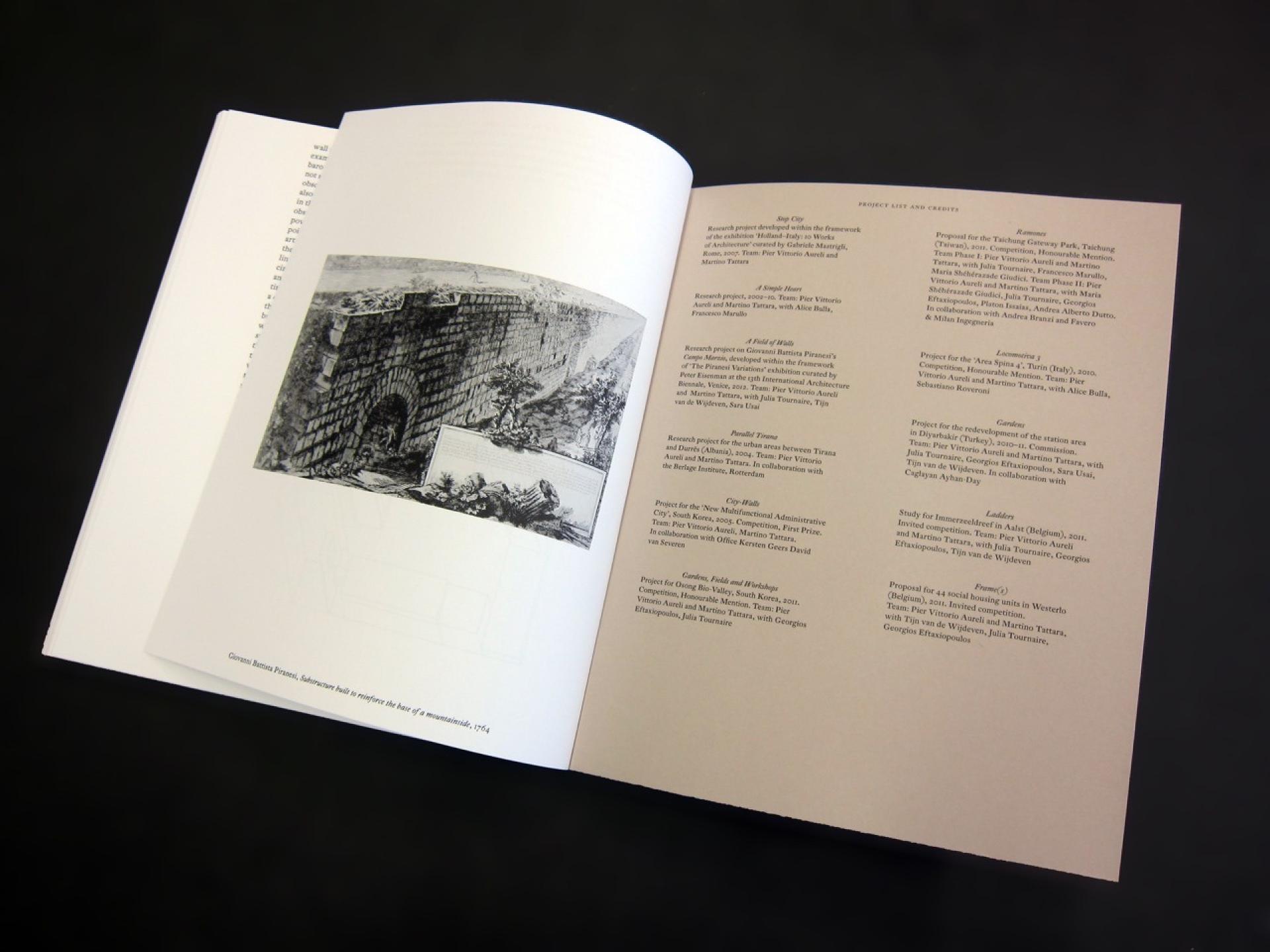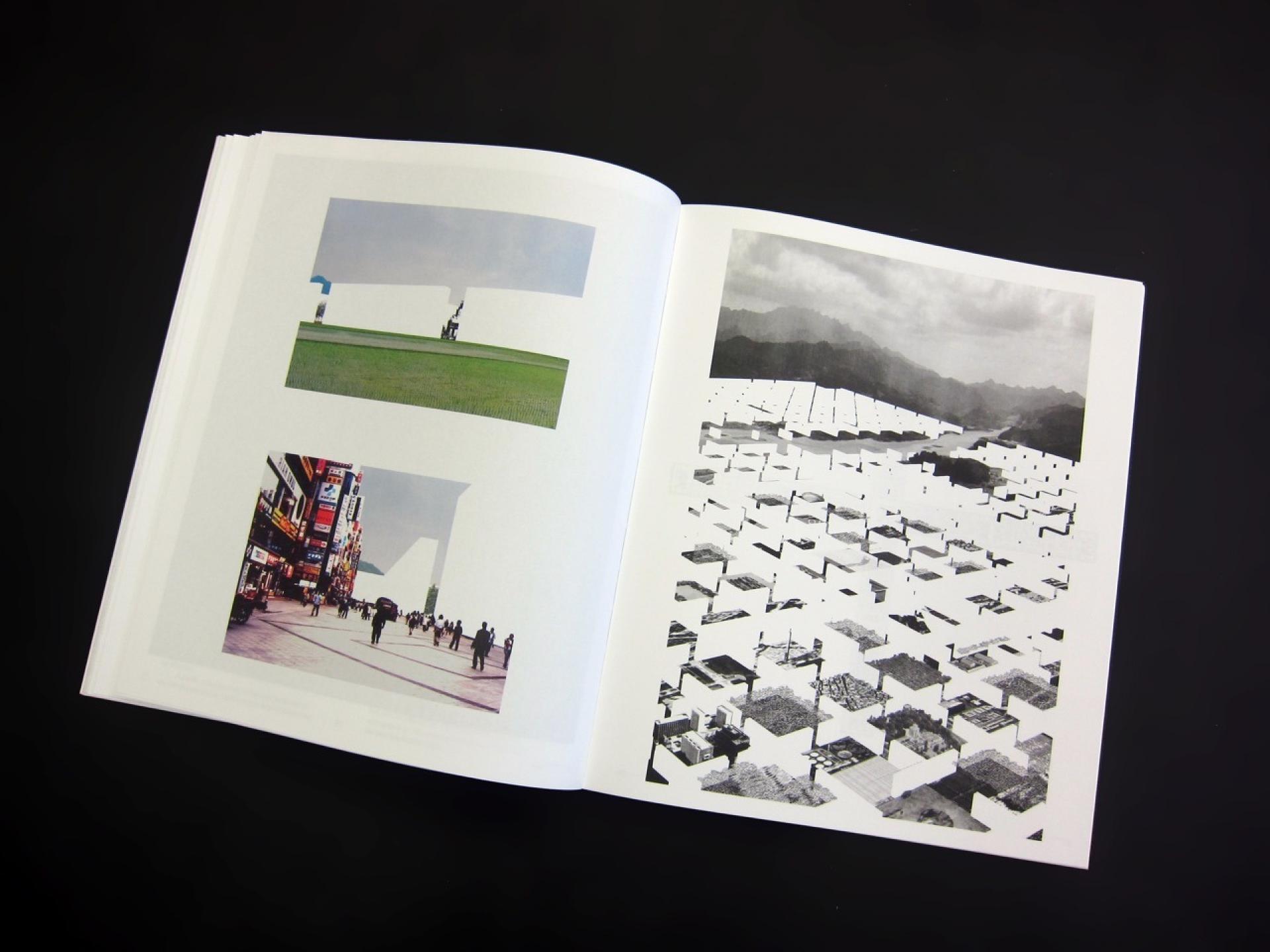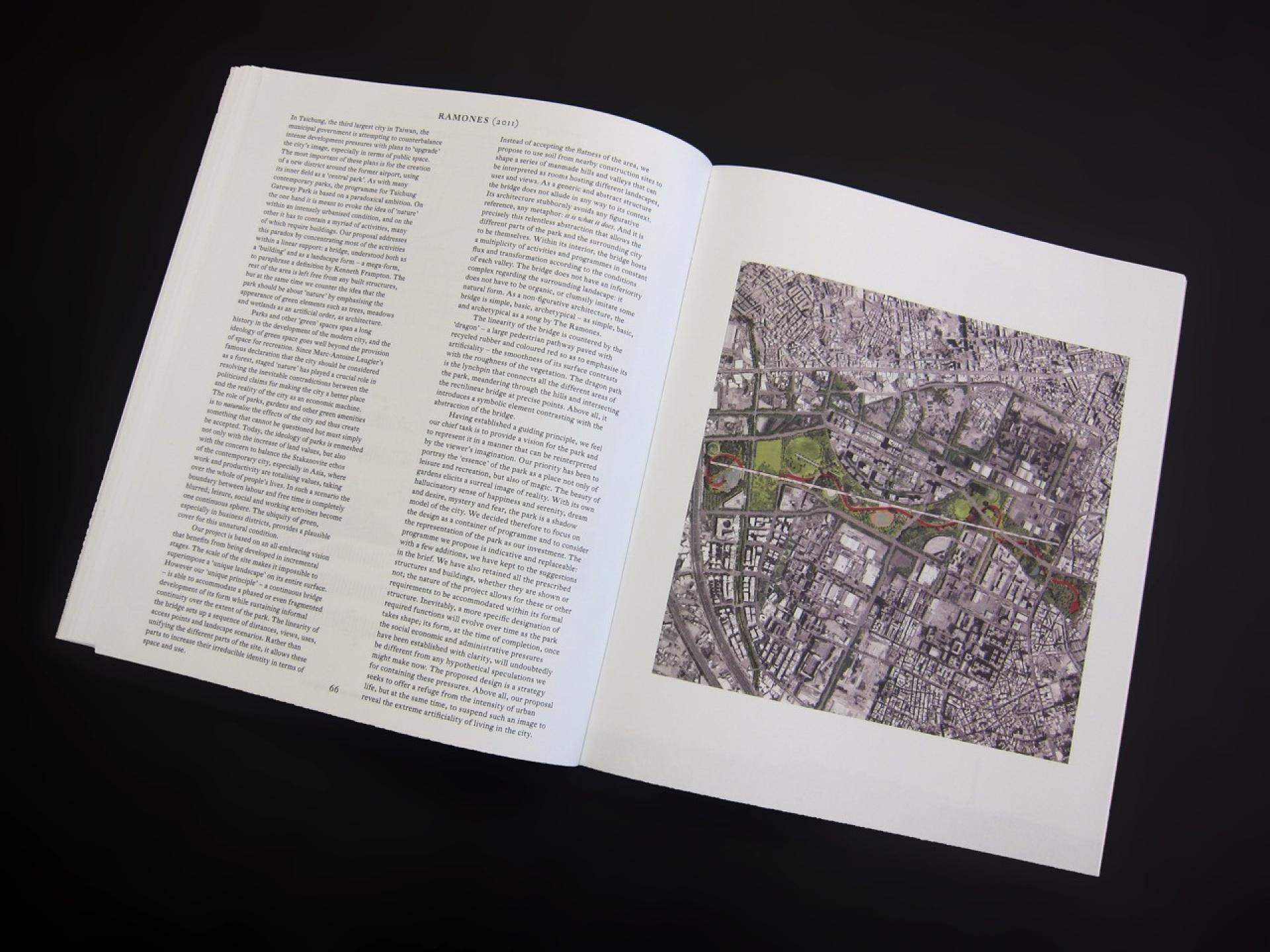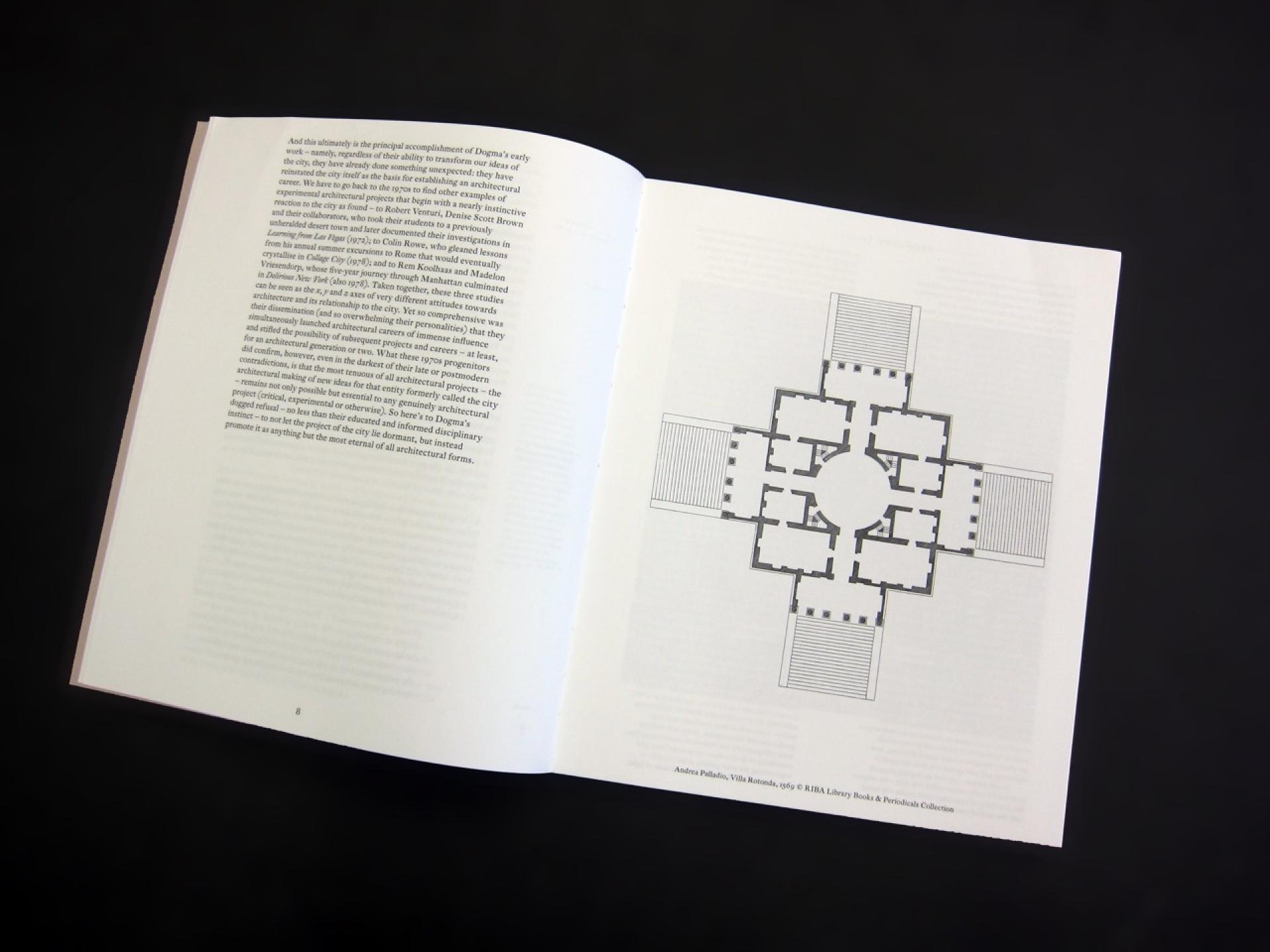P. V. Aureli, M. Tattara: Utopias By Dogma
Dogma: 11 projects by Pier Vittorio Aureli and Martino Tattara, with essays by Gabriele Mastrigli and Brett Steele published by AA Publications (2nd edition), London, 2015

Thanks to the great architecture bookshop Volume in Paris I discovered, a bit late I have to admit, this book by Dogma, two Italians architects based in Brussels (Pier Vittorio Aureli & Martino Tattara). On the first glance it reminded me of John Hejduk’s publication Victims (their layout is very similar and they are both published by the Architectural Association in London). But when I opened it I found an avalanche of references starting with Palladio, arriving at Le Corbusier and passing by Archizoom, Superstudio, Ludwig Hilberseimer, Rem Koolhaas or Piranesi. Dogma have a vast and critical knowledge of the history of architecture and they play with it - not to justify themselves, but to create a conceptual narration that finds its roots in the different avant-gardes of the 20th century.
When you try to understand what links the 11 projects presented in the book, you will find that the works of Dogma are all connected to utopia (a word I usually hate because it has become so vague and overused and has lost most of its radical and revolutionary power); utopia of building cities with gigantic (and abstract) buildings, utopia of a scale that goes beyond the monumental and transforms the relation between city and architecture, utopia as a tool for criticism and utopia as an ultimate moment of freedom. However, like the many utopias the history of architecture has seen, they are often conceived to stay on paper.

Stop City, one of the 11 projects presented by Dogma.
That Dogma is obsessed with history is already apparent in the title of the first of the 11 projects presented in the book: a direct reference to the No-Stop City (1970) by Archizoom. A few pages further, it is Rem Koolhaas’s turn with The Voluntary Prisoners of Architecture (1972), Dogma are interested in walls crossing entire cities or simple buildings Which are able to dominate whole landscapes. They propose something that no architects dares to think (and do) anymore: a radical intervention that goes further than a singular, freestanding spectacular object in a generic urban context.
The book transpires a feeling of nostalgia and the drawings share an amazing quality between conceptualism, simplicity, minimalism and graphic perfection. Obviously, they are here to transport and communicate an idea: changing the world through radical means and meanings. Dogma produces collages that are extremely clever and radical, like the total absence of the building in their Stop City project (2007), the architecture being reduced to a white surface, a ghost of simple but overwhelming beauty.
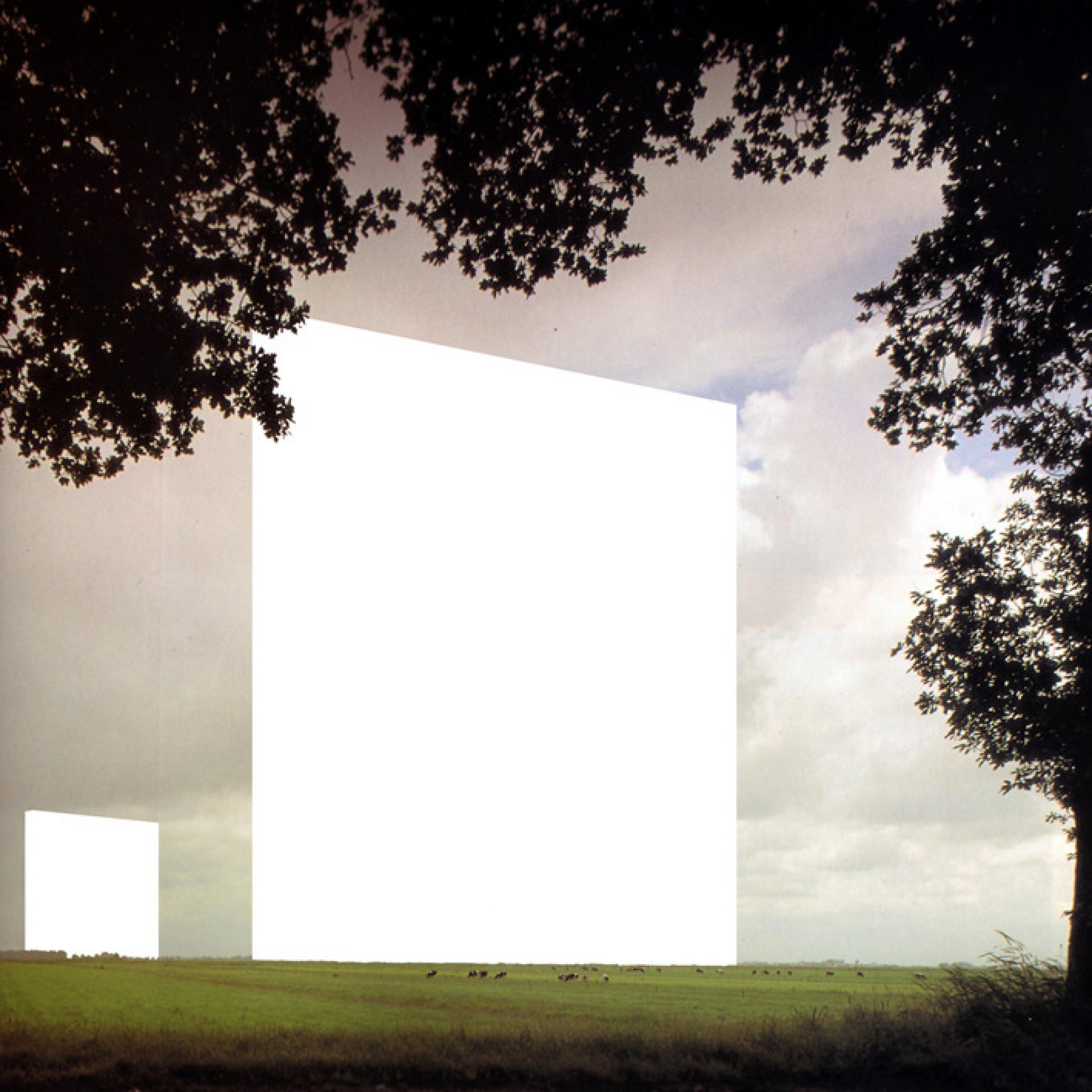

There is only one essential question: once this architecture will not be paper only, but be built somewhere, somehow for somebody, will it be able to preserve its amazing seduction?
Dogma: 11 Projects – 2nd Edition by Pier Vittorio Aureli and Martino Tattara, with essays by Gabriele Mastrigli and Brett Steele 120 pages, 280 x 232 mm, extensive colour and b/w illustrations AA Publications, paperback, 2015

